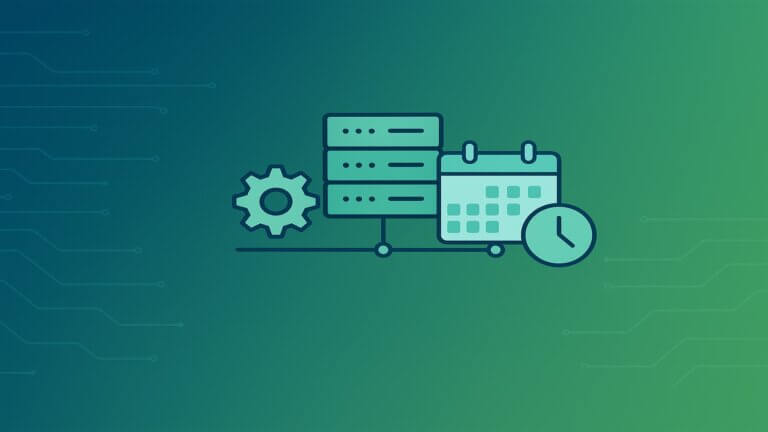AWS Savings Plans are flexible pricing models that offer significant savings on Amazon Web Services (AWS) in exchange for a consistent usage commitment over one or three years. These plans are designed to help businesses optimize their cloud spending, allowing for cost reduction while maintaining performance and scalability.
Cost optimization has become essential in cloud computing, where resources can quickly become expensive if not managed effectively. In the previous CloudAvocado article, we have explored the key differences between Reserved Instances and Savings Plans, highlighting how Savings Plans offer more flexibility while still delivering substantial cost savings. Now, this guide will break them down for you, focusing on pricing structures, benefits, and comparisons with other models to help you make informed decisions.
What Are AWS Savings Plans?
AWS Savings Plans are pricing models that allow you to commit to a certain amount of compute usage over time, typically offering up to 72% savings compared to On-Demand instances. These plans cover various services, including EC2, AWS Lambda and AWS Fargate, and can be applied flexibly across regions and instance families.
In comparison to other AWS pricing models, such as On-Demand and Reserved Instances, Savings Plans offer a more adaptable approach. While Reserved Instances lock you into specific instance types and regions, Savings Plans provide flexibility, allowing businesses to switch between instance types or regions without losing benefits. This adaptability makes Savings Plans particularly appealing for businesses with evolving compute needs.
The main benefits of AWS Savings Plans include cost savings, flexibility across services, and ease of management, making them a compelling choice for organizations aiming to reduce their cloud spending.
Types of AWS Savings Plans
AWS Savings Plans are categorized into two main types: Compute Savings Plans and EC2 Instance Savings Plans. Each plan type caters to different use cases and levels of flexibility, allowing businesses to optimize their cloud spending based on their unique needs. Understanding the differences between these plans is essential for making an informed decision that aligns with your organization’s operational requirements and budget.
Compute Savings Plans
Compute Savings Plans offer the most flexibility among AWS Savings Plans, providing significant savings for users who need adaptable infrastructure. These plans apply to EC2, Lambda and Fargate usage and allow businesses to switch seamlessly between instance families, regions, and even operating systems (OS). This flexibility makes Compute Savings Plans ideal for companies that have dynamic or fluctuating workloads but still want to maintain cost efficiency.
For example, if your business needs to move workloads from one region to another or switch from one instance type to another as your needs evolve, Compute Savings Plans ensure you retain cost savings across these changes. The primary use case is for organizations seeking high flexibility without compromising on long-term cost benefits.
EC2 Instance Savings Plans
EC2 Instance Savings Plans, on the other hand, are more specific in their scope. These plans provide savings for users who can commit to a specific EC2 instance family in a particular region. Unlike Compute Savings Plans, which offer cross-region and cross-instance flexibility, EC2 Instance Savings Plans are tied to a particular instance family, such as C5, M5, or R5, and are best suited for businesses with more predictable workloads that don’t require frequent changes in infrastructure.
The trade-off for this specificity is deeper discounts compared to Compute Savings Plans. If your workloads remain consistent and you don’t need to switch instance types or regions, this plan can offer significant cost savings.
Amazon SageMaker Savings Plans
Amazon SageMaker Savings Plans provide cost savings specifically for machine learning workloads using Amazon SageMaker. These plans allow you to commit to a specific dollar-per-hour usage for SageMaker, offering flexibility across instance types, regions, and SageMaker services, with savings of up to 64% compared to On-Demand pricing. This plan is ideal for businesses running extensive machine learning models looking for long-term savings on their ML infrastructure.
How AWS Savings Plans Pricing Works
AWS Savings Plans operate on a commitment-based pricing model, where you agree to a specific usage level measured in dollars-per-hour for either one- or three-year term. The more you commit, the higher the discount, with savings of up to 72% compared to On-Demand pricing.
For instance, for AWS EC2 Savings Plans, the pricing breakdown is as follows:
- 1-Year Commitment:
- All Upfront: Offers the highest savings, with an average discount of up to 54%.
- Partial Upfront: Requires a smaller upfront payment, with discounts of up to 42%.
- No Upfront: Provides the most flexibility in payments, with a discount of around 30%.
- 3-Year Commitment:
- All Upfront: Discounts can reach up to 72%, making it the most cost-effective option for long-term, stable workloads.
- Partial Upfront: A smaller upfront investment, but still offering substantial savings of around 59%.
- No Upfront: Offers the convenience of monthly payments while achieving savings of up to 45%.
For Compute Savings Plans, the discounts are similar, offering a maximum of 66% savings over On-Demand pricing with a 3-year, All Upfront commitment.
AWS calculates your usage based on how much compute capacity you consume. For example, if you commit to a $10 per hour usage, AWS will apply Savings Plan discounts to any usage that fits within this amount. If you exceed the commitment, additional usage is charged at On-Demand rates.
Choosing the Right Savings Plan
When selecting the appropriate Savings Plan, it’s essential to consider your workload type and the predictability of your usage. If your workloads are highly variable, with frequent changes in instance types or regions, a Compute Savings Plan offers the flexibility you need. However, if your workload is stable, operating within a specific instance family and region, an EC2 Instance Savings Plan may be more beneficial due to the deeper discounts.
For example, businesses with applications requiring consistent performance, such as databases running on specific EC2 instance types, would benefit from EC2 Instance Savings Plans. Meanwhile, dynamic web applications with fluctuating resource requirements across regions are better suited to Compute Savings Plans.
Scenarios:
- Compute Savings Plan: A startup that frequently adjusts its cloud infrastructure due to scaling demands and changes in traffic.
- EC2 Instance Savings Plan: A media streaming platform that runs on a predictable set of instances within one region.
How to Purchase and Manage AWS Savings Plans
Purchasing an AWS Savings Plan is simple and can be done in a few steps:
- Log in to your AWS Cost Management Console.
- Navigate to “Billing” and select “Savings Plans” from the menu.
- Select the type of Savings Plan you need—either Compute Savings Plans or EC2 Instance Savings Plans—based on your workload requirements.
- Configure the plan details, including your desired hourly commitment level, term length (1-year or 3-year), and payment option (All Upfront, Partial Upfront, or No Upfront).
- Review your selections and confirm your purchase.
Once purchased, it’s important to regularly monitor your usage through AWS Cost Explorer, which provides detailed insights into how your savings plan is being applied. If you notice that your actual usage diverges from your committed spend, adjustments or plan modifications can be made during renewal or by purchasing an additional Savings Plan to cover excess usage.
AWS Savings Plans are an excellent way to optimize your cloud costs, offering flexibility for dynamic workloads or deeper discounts for predictable usage. By understanding the various Savings Plan options and carefully choosing the one that matches your business needs, you can achieve significant cost savings while maintaining operational efficiency.
To explore AWS Savings Plans and start reducing your cloud costs, consider consulting with an AWS expert or visiting the AWS Savings Plans page for more detailed guidance.



